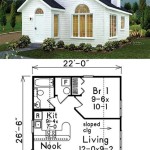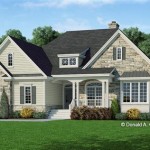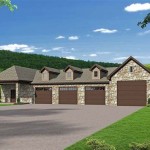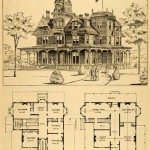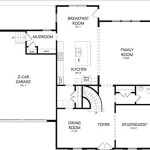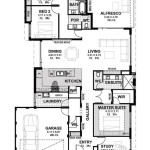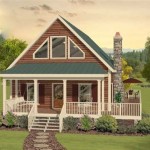Chalet Style Home Floor Plans: Design, Characteristics, and Considerations
Chalet style homes, often associated with mountainous regions and winter getaways, embody a rustic charm and practical design well-suited for a variety of climates and lifestyles. These homes are characterized by their distinctive architectural features, including steeply pitched roofs, exposed wooden beams, and large windows that maximize natural light and showcase surrounding landscapes. Understanding the nuances of chalet style floor plans is essential for those considering building or renovating a property in this aesthetic, as thoughtful space planning and material selection significantly impact the overall functionality and visual appeal of the home.
The origins of chalet architecture can be traced back to the Swiss Alps, where it initially served as a functional design for agricultural buildings. Over time, this practical construction evolved into a recognized residential style. Modern chalet designs often incorporate contemporary amenities and building materials while preserving the core elements that define the aesthetic. A chalet style floor plan must consider the specific needs of the occupants and the environmental conditions of the building site to ensure a comfortable and efficient living space.
Key Characteristics of Chalet Style Floor Plans
Chalet floor plans are often characterized by an open-concept layout, particularly in the main living areas. This design approach fosters a sense of spaciousness and encourages social interaction. The kitchen, dining area, and living room typically flow seamlessly into one another, creating a central hub for the home.
Fireplaces are another defining feature, often serving as a focal point in the living room. Built from stone or brick, these fireplaces provide warmth and ambiance, contributing to the cozy and inviting atmosphere associated with chalet style homes. The location of the fireplace should be carefully considered during the floor plan design process, as it can significantly impact the layout and functionality of the surrounding spaces. Ideally, the fireplace should be centrally located to efficiently distribute heat throughout the main living areas.
Sleeping areas, typically situated on upper levels or in more secluded areas of the home, are designed to offer privacy and tranquility. Master suites often include en-suite bathrooms and walk-in closets, providing a comfortable retreat for homeowners. Additional bedrooms can be configured to accommodate family members or guests. Thoughtful placement of bedrooms is crucial to minimize noise transfer from common living areas.
Entryways and mudrooms are essential components of chalet floor plans, particularly in regions with cold or snowy climates. These spaces provide a practical area for removing and storing outdoor gear, preventing dirt and moisture from being tracked into the main living areas. Mudrooms commonly include storage lockers, benches, and durable flooring materials that can withstand heavy use. The size and configuration of the entryway should be proportionate to the overall size of the home and the number of occupants.
Balconies and decks are integrated into the design to capitalize on views, providing outdoor living spaces that extend the interior of the home. These areas are typically constructed from wood and may include features such as railings, benches, and outdoor fireplaces. The orientation of balconies and decks should be carefully considered to maximize sunlight exposure and minimize exposure to harsh weather conditions.
Factors Influencing Chalet Style Floor Plan Design
The specific location of the building site significantly influences the layout and orientation of the floor plan. Properties located on slopes or uneven terrain may require specialized foundation designs and floor plan configurations to accommodate the natural topography. Consideration must be given to the direction of prevailing winds, sun exposure, and the availability of natural resources such as water and timber.
The climate of the region also plays a critical role in shaping the floor plan. In colder climates, passive solar design principles can be incorporated to maximize heat gain during the winter months. Large south-facing windows can capture sunlight, while strategically placed overhangs can provide shade during the summer. Insulation levels and window glazing should be carefully selected to minimize heat loss and reduce energy consumption.
The number of occupants and their specific needs are key considerations in determining the size and configuration of the floor plan. Families with young children may require dedicated play areas or home offices, while empty-nesters may prefer a more compact and low-maintenance design. Accessibility considerations should also be addressed, particularly for individuals with mobility impairments. This may involve incorporating features such as wider doorways, ramps, and zero-threshold showers.
Local building codes and zoning regulations can influence various aspects of the floor plan, including setbacks, height restrictions, and allowable building materials. It is essential to consult with local authorities and obtain the necessary permits before commencing construction. Compliance with energy efficiency standards and fire safety regulations is also crucial to ensure the safety and sustainability of the home.
The budget available for construction and finishing significantly impacts the materials used and the scope of the project. Luxury chalet designs may incorporate high-end finishes such as stone countertops, hardwood floors, and custom cabinetry, while more budget-friendly options may utilize composite materials and prefabricated components. It is important to prioritize essential features and make informed decisions about material selections to stay within budget while achieving the desired aesthetic.
Considerations for Specific Areas within a Chalet
The kitchen is a central gathering place in most homes, and chalet style kitchens typically feature a blend of rustic charm and modern functionality. Open shelving, exposed wooden beams, and natural stone accents contribute to the overall aesthetic. The layout should be designed to maximize efficiency and provide ample counter space for food preparation. A large island or peninsula can serve as a gathering point for family and friends.
Bathrooms in chalet style homes often incorporate natural materials such as wood, stone, and ceramic tile. Walk-in showers, soaking tubs, and double vanities are common features in master bathrooms. Thoughtful lighting design is essential to create a relaxing and spa-like atmosphere. Heated floors can provide added comfort during colder months.
Bedrooms should be designed to offer privacy and tranquility. Neutral color palettes, soft textures, and ample natural light can create a calming environment. Built-in storage solutions can help maximize space and minimize clutter. The placement of windows should be carefully considered to ensure privacy and prevent unwanted light from entering the room in the morning.
The exterior of the chalet should complement the surrounding landscape. Natural materials such as wood siding, stone accents, and metal roofing are commonly used. The roof should be designed to withstand heavy snow loads in colder climates. Landscaping should be incorporated to create a cohesive and visually appealing outdoor space. Native plants and natural stone pathways can enhance the rustic charm of the property.
Interior finishes should be selected to create a warm and inviting atmosphere. Natural wood finishes, exposed beams, and stone accents contribute to the overall aesthetic. Lighting fixtures should be chosen to provide both functional and ambient lighting. Area rugs can add warmth and texture to the floors. Artwork and accessories should be selected to complement the style of the home and reflect the personal tastes of the occupants.
Energy efficiency is an important consideration in chalet home design. High-performance windows, insulation, and HVAC systems can help reduce energy consumption and lower utility bills. Solar panels can be installed to generate renewable energy. Water-saving fixtures and appliances can help conserve water. Sustainable building materials should be used whenever possible to minimize the environmental impact of the home.
Adapting Chalet Style Floor Plans for Modern Living
While traditionally associated with rustic architecture, chalet design can be adapted to incorporate modern amenities and design trends. Integrating smart home technology, such as automated lighting and temperature control, can enhance convenience and energy efficiency. Clean lines and minimalist décor can be combined with natural materials to create a contemporary chalet aesthetic.
Flexibility is a key consideration in modern floor plan design. Multi-functional spaces can be designed to serve multiple purposes, such as a home office that can be converted into a guest bedroom. Open-concept layouts can be adapted to provide greater privacy through the use of partitions or sliding doors. The floor plan should be designed to accommodate the changing needs of the occupants over time.
Outdoor living spaces are increasingly important in modern home design. Chalet style homes can incorporate outdoor kitchens, fire pits, and comfortable seating areas to create inviting outdoor environments. Landscaping should be designed to provide privacy and shade. The orientation of outdoor living spaces should be carefully considered to maximize sunlight exposure and minimize exposure to harsh weather conditions.
Ultimately, a well-designed chalet style floor plan should reflect the unique needs and preferences of the occupants while harmonizing with the surrounding environment. Careful consideration should be given to the factors influencing floor plan design, and attention should be paid to the details that contribute to the overall functionality and aesthetic appeal of the home. By combining traditional chalet elements with modern design principles, it is possible to create a comfortable, sustainable, and visually stunning living space that embodies the spirit of the mountains.

Piedmont Chalet Style Log Home Floorplan Real Homes C M Allaire

Floor Plan For Model C 501 Chalet Style House

House Plan 4 Bedrooms 2 5 Bathrooms 2945 V2 Drummond Plans

Rambler Modular Cape Floor Plans Signature Building Systems

Small Chalet Home Design 2 Bedroom Bathroom House Plans Country Style For

Luxury House Plans For A Swiss Chalet Style Mountain Home

House Mountain Chalet 900 Plan Green Builder Plans

1912 Swiss Chalet Bungalow La Investment Co This Is My Fave So Far Complete With Sleeping Porch Beach House Plans Vintage

Chalet House Plans Floor Designs Houseplans Com

C 511chalet House Plan From Creativehouseplans Com


